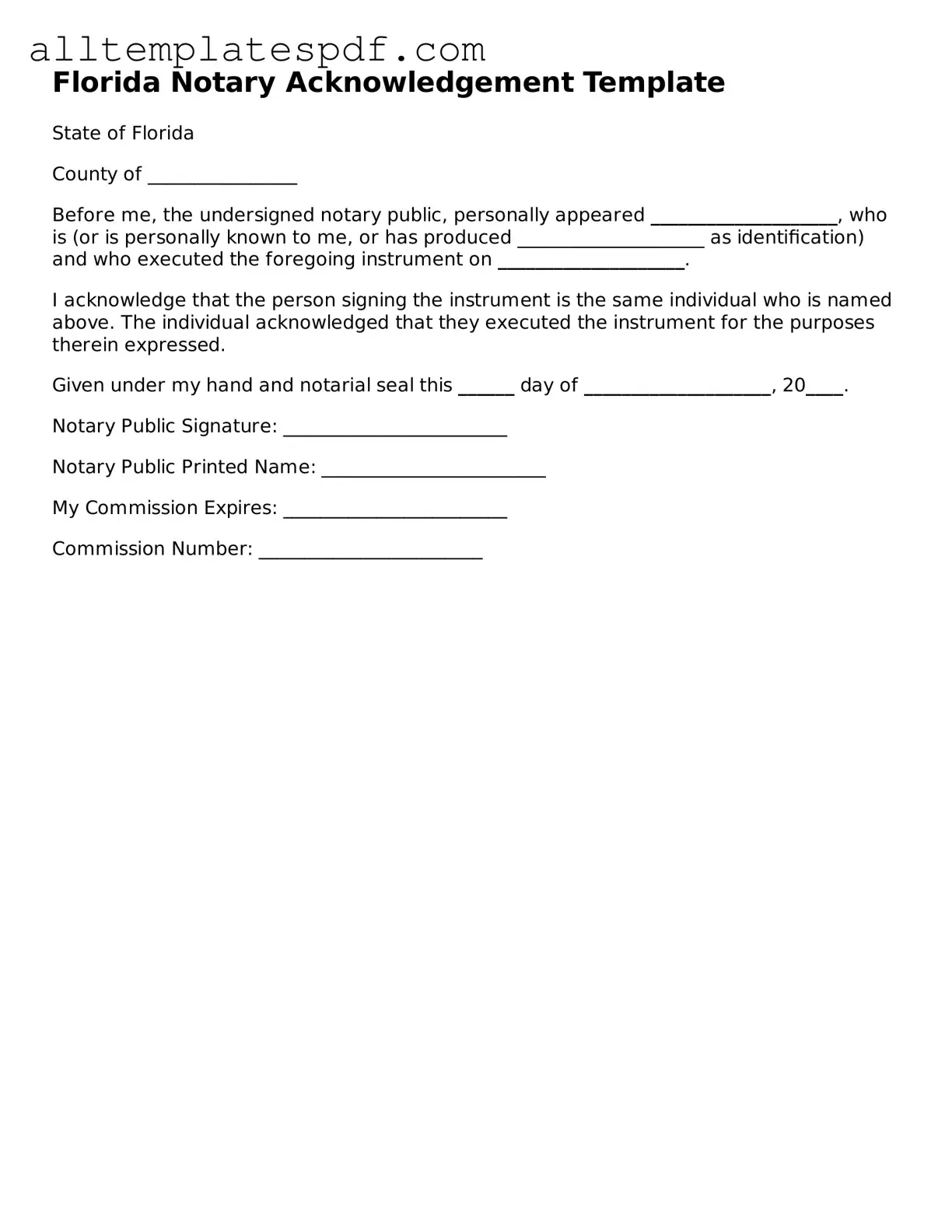Filling out the Florida Notary Acknowledgment form can seem straightforward, but several common mistakes can lead to complications. One frequent error is omitting the date of the acknowledgment. This date is crucial as it establishes when the notary performed the acknowledgment. Without it, the document may lack validity.
Another mistake involves incorrect identification of the signer. The form requires the notary to confirm the identity of the person signing the document. Failing to accurately describe the signer, such as using the wrong name or title, can invalidate the acknowledgment.
People often forget to include the notary's seal. The seal must be clear and legible, as it serves as proof that the notary is authorized to perform the acknowledgment. Without a proper seal, the document may not be accepted by institutions that require notarization.
Additionally, some individuals neglect to provide the correct venue. The venue indicates where the acknowledgment took place, and omitting or incorrectly stating this information can lead to issues later on. Always ensure that the venue is accurate and complete.
Another common mistake is failing to sign the form. The notary must sign the acknowledgment to validate it. A missing signature can render the entire document useless, so it’s important to double-check that the notary's signature is present.
People sometimes use outdated forms. Notary laws can change, and using an old version of the acknowledgment form may not comply with current regulations. Always verify that you are using the most recent version of the form.
In some cases, individuals do not properly fill out the signer’s capacity. If the signer is acting in a representative capacity, such as a corporate officer or attorney-in-fact, this must be clearly stated. Failing to do so can create confusion about the authority of the signer.
Lastly, many overlook the importance of clarity in handwriting. Illegible handwriting can lead to misunderstandings or disputes about the content of the acknowledgment. Take the time to write clearly and ensure all information is easily readable.
